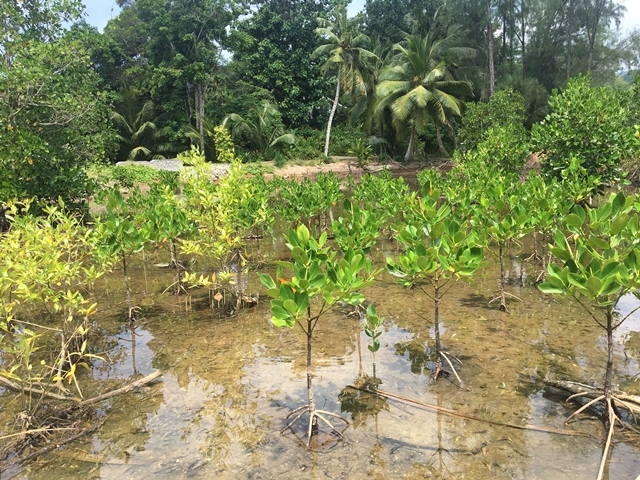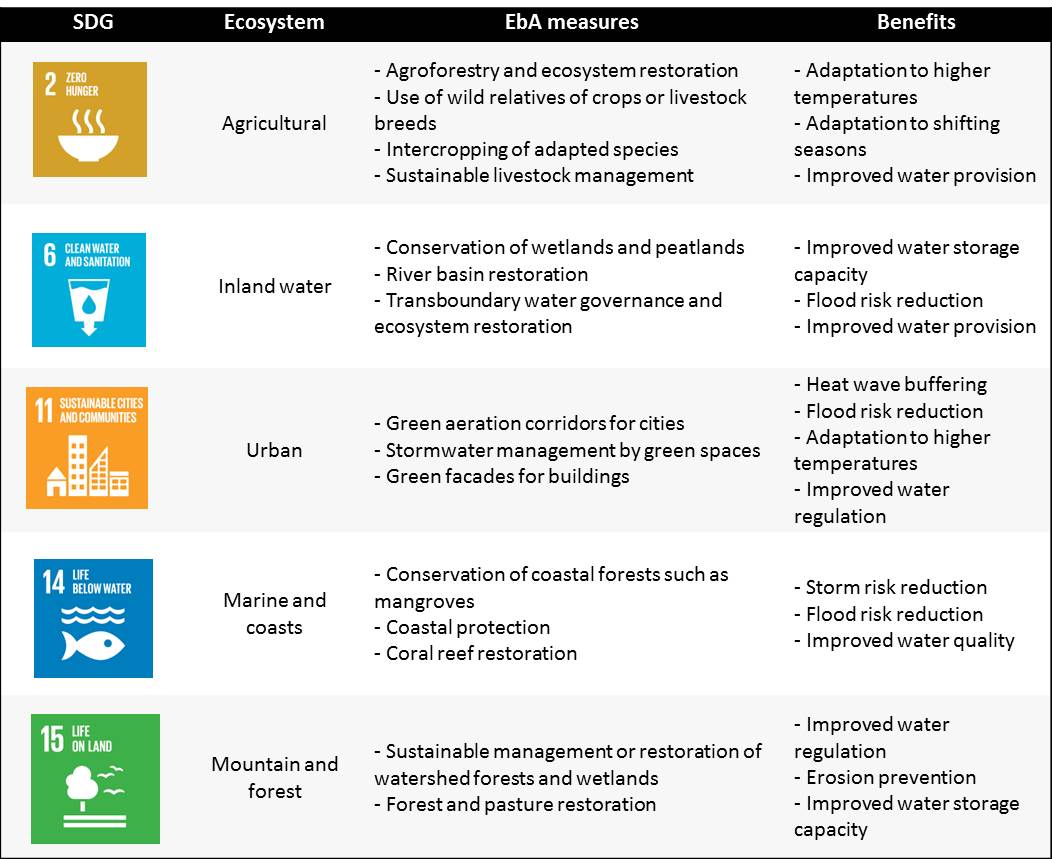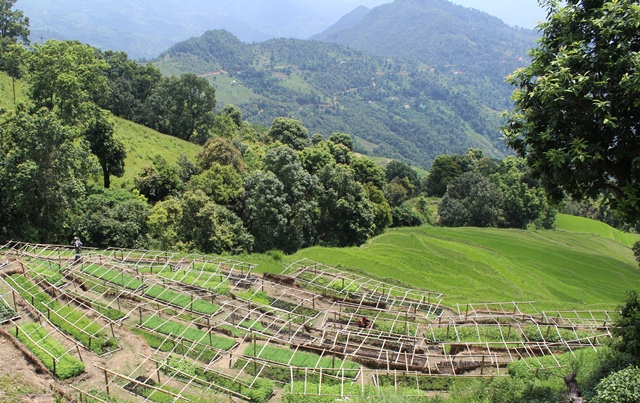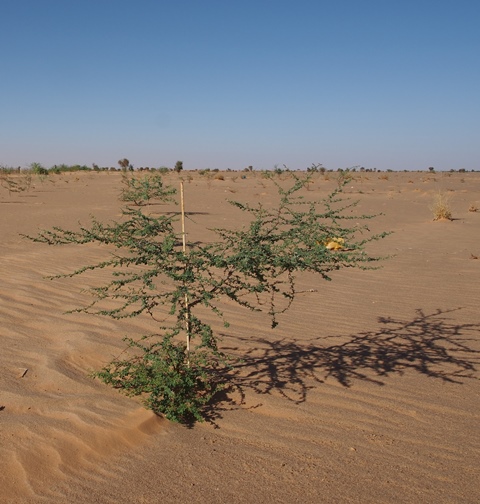“Nature is our best bet to tackle climate change and secure the future,” said Joyce Msuya, Acting Executive Director of the UN Environment Programme, at the declaration of the UN Decade on Ecosystem Restoration (2021-2030) in early March. Sustainable ecosystem management is pivotal to achieving the SDGs, in particular on climate change (SDG 13), poverty eradication (SDG 1), food security (SDG 2), water (SDG 6) and biodiversity conservation (SDGs 14 and 15). To be precise, natural capital stocks and ecosystem service flows underpin all human activities towards accomplishing the SDGs.

In climate change adaptation, nature-based solutions, or Ecosystem-based Adaptation (EbA), are now entering the spotlight worldwide. In recent years, the term ‘EbA’ has been described as “the use of biodiversity and ecosystem services as part of an overall adaptation strategy to help people to adapt to the adverse effects of climate change.” EbA is critical for achieving the SDGs in a changing climate. Many of the SDGs are directly associated with the health of ecosystems and the services they provide. Besides, most SDGs specifically target the most disadvantaged and marginalized groups of society who are highly dependent on ecosystems to support their livelihoods. With the call to “leave no-one behind”, the SDGs also underscore the opportunity for the local communities and marginalized groups to supply their knowledge and needs into the design and implementation of policies. This “inclusive and participatory multi-stakeholder” approach is also a key principle of EbA in particular. Table below presents examples of EbA measures and their relevance to SDGs:


To give specific examples of EbA interventions, the Global Environment Facility (GEF)-funded project, ‘Ecosystem-based Adaptation through South-South Cooperation’ (EbA South, 2013-2019), piloted on-the-ground EbA interventions in Mauritania, Nepal and Seychelles, representing three different vulnerable ecosystems (dryland, mountain and coastal areas, respectively). Mauritania established multi-use greenbelt using indigenous drought-resilient and soil-stabilizing species on the degraded arid/semi-arid land to combat desertification and provide non-timber forest products (NTFPs) for local communities. In Seychelles, the project restored mangroves and coastal wetlands to buffer against flooding and secure coastal livelihoods. Apart from protecting residential and commercial areas from coastal erosion, the project generated significant co-benefits by boosting ecotourism and green education for youth. In Nepal, among the project’s achievements was large-scale plantation of climate-resilient seedlings for reforestation, enrichment and/or household agroforestry, enabling communities to practice alternative livelihoods, including honey harvesting, vegetable plantation, fruit orchards, and cardamom plantation. All the interventions were implemented within a long-term research framework through cooperation between research institutes and governments, providing a scientific evidence base for practicing EbA, influencing national policies and designing future projects.

EbA has quickly gained prominence both in the context of climate change and biodiversity conservation policies. EbA has been applied in various ecosystem types, and the role of EbA at transboundary level is being increasingly highlighted. So far, there have been more than 150 EbA initiatives across the globe. However, despite the growing interest in EbA, its current application still lags behind its potential, and questions remain to be answered regarding the conceptual framework shaping EbA components and processes. To encourage EbA application, it is essential to strengthen scientific evidence for EbA to gain political support across different levels, secure funding, and ultimately facilitate its implementation.
So, what specific areas of knowledge are not yet sufficiently explored but essential? What tools can facilitate EbA research? What financial resources and events could support the latest EbA knowledge development? A new report titled, ‘Research on Ecosystem-based Adaptation (EbA): A reference guide,’ produced under the EbA South project has the answers.
Drawing on extensive literature review, the report identifies key knowledge gaps as follows:
• A comprehensive grasp of the implications that climate change has on the human and natural systems in different geographical areas is still limited. Understanding how and to what extent climate change affects ecosystems and populations is imperative for the design of adequate and effective EbA measures.
• Evidence of the economic costs, benefits and tradeoffs of EbA measures is essential but currently insufficient to advocate for their cost effectiveness. EbA is considered as a promising and cost-effective option to address climate change impacts and provide multiple benefits. However, its implementation still continues to be relatively underestimated when compared to engineered options. Additional evidence of the effectiveness of EbA measures compared to “grey” infrastructure is required.
• Monitoring and evaluation of EbA measures remains a challenge, and impedes learning and establishment of best practices. The growing interest in monitoring, measuring and evaluating “successful” adaptation has resulted in the development of monitoring and evaluation frameworks and project-specific indicators for some tangible outputs. Yet challenges remain such as considering time horizons, complexity of socio-ecological systems and uncertainties regarding climate change and development paths.
The report highlights a range of tools for planning and implementation of EbA measures, with some focusing on ecosystem valuation and assessment of vulnerability and risk and others on decision support for adaptation planning. Several inventories on EbA-relevant tools are available, including the EbA Tools Navigator. Among the long list of tools, stands out the EbA planning tool ‘ALivE: Adaptation, Livelihoods and Ecosystems.’ ALivE aims to provide practitioners with a systematic process to identify and prioritize EbA options based on a context-specific analysis of ecosystems, livelihoods and climate change, to encourage greater uptake of effective EbA approaches.
To advance in EbA research implies to build the capacity of the research community, thus it is essential to secure funding for research. Examples of relevant awards include: Trees and People: Resilience in a Changing Climate; Doctoral Research Awards; Canadian International Food Security Research Fund; and Humboldt Foundation International Climate Protection Fellowship.
* * *
This article was written by Tatirose Vijitpan (tatirose.vijitpan@unep-iemp.org) and Diwen Tan (diwen.tan@unep-iemp.org), EbA South Project Co-Managers, UN Environment Programme – International Ecosystem Management Partnership (UNEP-IEMP), and Lili Ilieva (lili.ilieva@gmail.com), freelance consultant. This article is based on a report of the EbA South. EbA South is a full-sized GEF project, funded through the Special Climate Change Fund (SCCF), and implemented by the UN Environment Programme. UNEP-IEMP provides overall project management services and technical support, and fosters South-South linkages for the project.
The article has been slightly revised based on the original version published by 'SDG Knowledge Hub, a project by IISD'. http://sdg.iisd.org/commentary/guest-articles/ecosystem-based-adaptation-helping-nature-help-people-adapt-to-climate-change-and-deliver-sdgs-filling-the-knowledge-gaps/.

